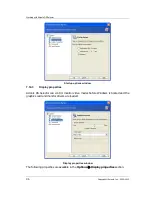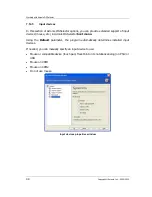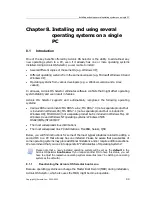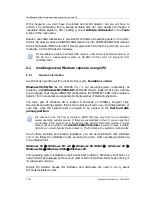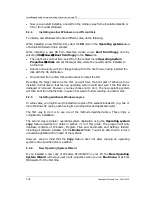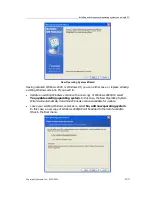
Hard Disk And File Systems
110
Copyright © Acronis, Inc., 2000–2010
Appendix A.
Hard Disk And File Systems
These appendices contain additional information about hard disk construction and data
storage, partitions, file systems and interaction of operating systems with hard disks.
A.1
Hard Disk Organization
All hard drives have basically the same structure. Inside the case, there are several disks
with a magnetic coating set on a single axis (spindle). A special motor provides the
necessary rotation speed to the spindle, e.g. 5,400 rpm, 7,200 rpm, or 10,000 rpm.
Information on disks resides on concentric
tracks
. Each track has a number. The
outermost track is number 0, and the numbers grow inwards.
Each of the tracks is divided into
sectors
that contain minimal information blocks that can
be written to the disk or read from it. Sectors also have numbers. On every disk, there is
a marker that indicates the beginning of sector enumeration. The sector that is the closest
to this marker is number 1.
At the beginning of a sector, there is a header (prefix portion) that marks the beginning
of the sector and its number. At the end of a sector in the suffix portion, a checksum is
used to check data integrity. The data area between the prefix and suffix portions is 512
bytes in size.
Both sides of each disk on the spindle are used to store data. All tracks that have the
same number on all the surfaces of all disks comprise a
cylinder
. For each work surface of
a disk in the drive, there is a
head
that enables reading and writing data from/to the disk.
Heads are assembled into a block and are numbered, starting with 0.
To perform an elementary read or write operation, the head block should be positioned at
the necessary cylinder. When the appropriate sector (with the appropriate number in the
service area) of the rotating disks approaches the head, data is exchanged between the
head and the electronic circuit board of the disk drive.
Sector structure of a hard disk is created via
low-level formatting
during which each of the
tracks of the disk is marked up. This process generally takes place when the drive is
manufactured.
Modern disk drives usually contain relatively few magnetic disks (1–2) to make the head
block lighter and speed up access to sectors (a drive like this has 2–4 heads respectively).
There can be up to several tens of thousands of cylinders per disk. The greater the
amount of data that can be stored on one side of a disk,, the more cylinders can be
created on it and the larger the capacity of the disk.
This design has a lot of technical implementation peculiarities, but those issues are not
germane to this explanation.

